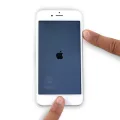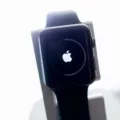IPad is one of the most popular tablet devices available today. It offers a range of features that make it an attractive device for both casual and professional users. One of its features is the ability to block pop-up ads and other unwanted content. This can be incredibly helpful in avoiding distractions while browsing or usng apps on your iPad.
However, tere may be times when you want to disable your iPad’s pop up blocker. Whether you need to access content from a specific website or just want to enjoy a more relaxed web experience, here’s how to disable the pop up blocker on your iPad:
1. Open the Settings app on your iPad and then tap “Safari”.
2. Scroll down until you find “Block Pop-ups” and toggle it off (the switch should turn from green to white).
3. You can also select “Advanced” from the Safari menu and choose “Website Data”, which will allow you to view any website data stored by Safari on your device.
4. Finally, select “Clear Website Data” and then confirm by tapping “Clear Website Data” again. This will delete all website data stored by Safari on your device including any pop up blocker settings that have been set up previously.
That’s it! Now you can safely browse the web without worrying about pesky pop ups getting in your way. Just remember to re-enable the pop up blocker once you’re finished browsing if you want to keep thse annoying ads away!

Locating the Popup Blocker on an iPad
The popup blocker on your iPad can be found in the Settings app. To access it, open the Settings app and select Safari from the list of options. Once you are in the Safari settings, scroll down to find the Block Pop-ups option and toggle it on. You can also turn on Fraudulent Website Warning here, whch will help protect you from malicious websites. With these two settings enabled, you should have a safe browsing experience on your iPad.
Unblocking Pop-ups on an iPad
To unblock pop-ups on your iPad, you’ll need to start the Settings app and navigate to the Safari section. Once there, locate the ‘Block Pop-ups’ option in the General section and switch it off by swiping the switch to the left. This will allw pop-ups to be shown on your iPad.
Turning Off Pop-up Blocker on Google on iPad
To turn off the pop-up blocker in Google on your iPad, first open the Chrome app. Then tap on More and select Settings. From there, select Content Settings and then choose Block Pop-ups. Finally, you can toggle the Block Pop-ups switch to Off to disable the pop-up blocker.
Disabling Pop-up Blocker Settings
To disable your pop-up blocker settings, open Chrome and click the three dots at the top riht of the window. From there, select Settings > Privacy and security > Site Settings > Pop-ups and redirects. Here you will see a toggle switch that you can use to turn off your pop-up blocker. Once you have done this, any site you visit will be able to show pop-ups unless they are blocked by other security software. If you wish to customize your pop-up blocker settings further, click on ‘Manage exceptions’ for additional options such as allowing specific websites to show pop-ups or blocking all sites from showing them.
Turning Off Pop-up Blocker in Safari
To turn off the pop-up blocker in Safari, open a Safari browser window, select the “Safari” menu, and then select “Preferences” from the drop down menu. The preference pane will open and then select “Security” on the top row. Uncheck the checkbox titled “Block pop-up windows”. Once you have unchecked this box, close the Preferences window. Your pop-up blocker should now be disabled.
Allowing Popups on Safari
To allow pop-ups on Safari, you will need to open the Safari browser on your device and then select the Preferences option from the Safari menu. From there, click on the Websites tab and then select Pop-up Windows. Finally, set the When visiting other websites option to Allow, wich will enable pop-ups from all websites. Once you’ve done this, you should be able to view any pop-ups that appear when browsing different webpages.
Understanding Pop-ups on an iPad
Pop-ups on iPad are ads, notices, offers or alerts that open in your current browser window, in a new window or in another tab. These can be intrusive and detract from your user experience. To prevent pop-ups from appearing on the iPad, it is important to check and update your software, as well as check Safari settings and security preferences. Additionally, you can use content blockers to block specific websites or domains that have intrusive pop-ups.
Allowing Pop-ups on iPad Chrome
In order to allow pop-ups on iPad Chrome, you must first open the Chrome app on your device. In the top rigt corner, tap the More icon which looks like three vertical dots and select Settings in the pop-up. Then scroll down and select Content Settings. On this page, select Pop-ups and redirects and switch Block Pop-ups to Allow. This will enable pop-ups in Chrome on your iPad.
Does the iPhone Have a Pop-up Blocker?
Yes, there is a pop-up blocker on iPhone. It can be found in the Safari section of your Settings app and is designed to stop most, if not all, pop-ups from appearing on your screen or browser. If you are seeing any pop ups, it may be because the pop-up blocker has been turned off. Turning it back on should help block any further pop up ads.
Conclusion
The iPad is an incredibly versatile device that has revolutionized the way we use technology. Its powerful combination of hardware, operating system, and apps make it an ideal tool for a variety of tasks. Whether you need to stay productive while on the go, create artistic masterpieces, or just stay in touch with family and friends, the iPad has you covered. It’s easy to use, lightweight and intuitive interface makes it a great choice for anyone looking for a powerful computing device that won’t take up too much space. With its wide range of features and capabilities, the iPad is an excellent choice for anyone who wants to get more out of their tech experience.








